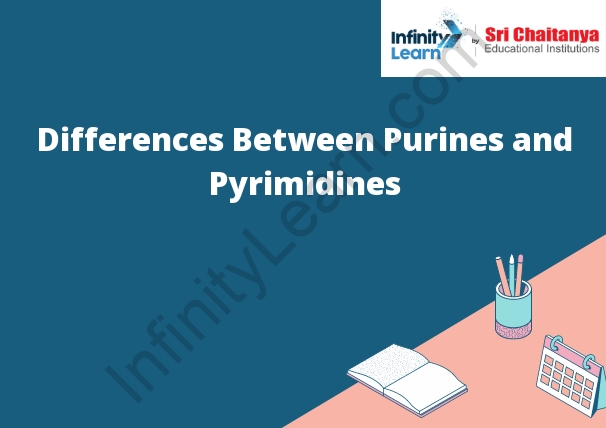Table of Contents
What are Purines and Pyrimidines?
Purines and pyrimidines are organic compounds that are the building blocks of DNA and RNA. The purines are adenine (A) and guanine (G), and the pyrimidines are cytosine (C) and thymine (T). The purines and pyrimidines are base pairs that pair together to form the DNA double helix. The base pairs are held together by hydrogen bonds. The function of the purine and pyrimidine bases is to provide the genetic information in DNA and RNA. The purine and pyrimidine bases are also responsible for the genetic code.

Structure of Purine and Pyrimidine
Purine and pyrimidine are heterocyclic organic compounds that are the basic structural elements of DNA and RNA. Purine consists of two fused rings, whereas pyrimidine consists of one fused ring.
Nucleobases
The nucleobases in DNA are adenine, cytosine, guanine, and thymine. These molecules are important because they are the “letters” that make up the genetic code.
1. Purine Catabolism
Purine catabolism is the process of breaking down purine nucleotides into their component parts. Purines are a class of molecules that are found in DNA and RNA. The process of purine catabolism begins by removing the phosphate group from the purine molecule. This leaves a purine base and a ribose or deoxyribose sugar. The purine base is then oxidized to form an uric acid molecule.
2. Pyrimidine Catabolism
The pyrimidine ring system is found in DNA and RNA and is composed of four carbon atoms and six nitrogen atoms. The pyrimidine ring system can be broken down into two parts, the pyrimidine base and the pyrimidine sugar. The pyrimidine sugar is composed of a five carbon sugar and a one nitrogen sugar. The pyrimidine base is composed of a five carbon base and a one nitrogen base.
The pyrimidine base can be broken down into two parts, the pyrimidine heterocycle and the pyrimidine nitrogen base. The pyrimidine heterocycle is composed of a four carbon ring and a two nitrogen ring. The pyrimidine nitrogen base is composed of a one nitrogen and a one carbon base.
The pyrimidine sugar can be broken down into two parts, the pyrimidine five carbon sugar and the pyrimidine one nitrogen sugar. The pyrimidine five carbon sugar is composed of a five carbon sugar and a zero nitrogen sugar. The pyrimidine one nitrogen sugar is composed of a one nitrogen sugar and a zero carbon sugar.
The Differences between Purine and Pyrimidine are the following –
1. Purine are composed of two benzene rings, while pyrimidine are composed of one benzene ring and one nitrogen atom.
2. Purine are generally more stable than pyrimidine.
3. Purine are generally more soluble in water than pyrimidine.
4. Purine have a higher melting point than pyrimidine.
5. Purine have a higher boiling point than pyrimidine.
6. Purine are more likely to form crystals than pyrimidine.
7. Purine are more likely to form colored compounds than pyrimidine.
8. Purine are more likely to form amines than pyrimidine.
Bonding between Purines and Pyrimidines
The bonding between purines and pyrimidines is a covalent bond. The two nitrogen atoms in the pyrimidine ring and the two nitrogen atoms in the purine ring share electrons in order to form a stable molecule. This type of bonding is called a nitrogen-nitrogen bond.
Presence in DNA and RNA
DNA is a double stranded molecule that is made up of nucleotides. The nucleotides are adenine (A), thymine (T), cytosine (C), and guanine (G). RNA is a single stranded molecule that is made up of nucleotides. The nucleotides are adenine (A), uracil (U), cytosine (C), and guanine (G).









